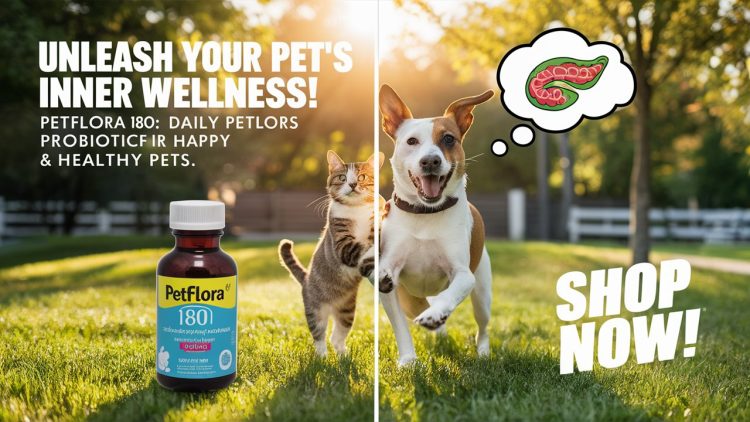Unveiling the Perfect Bowl: Choosing the Best Dog Food at PetSmart for Your Canine Companion
For every dog owner, navigating the vast aisle of dog food options at PetSmart can feel like staring into a bewildering kaleidoscope. Countless brands, formulations, and promises vie for your attention, making the quest for the “best” dog food a daunting task. But fret not, pet parent! This comprehensive guide will equip you with the knowledge and insights to decipher the complexities of dog food at PetSmart and discover the ideal nourishment for your beloved canine companion.
Understanding Your Dog’s Nutritional Needs: A Personalized Approach
The notion of a single “best” dog food is a myth. Every dog, just like us humans, has unique dietary requirements. Factors like breed, age, activity level, and any existing health conditions will significantly influence the type of food your furry friend thrives on.
-
Breed Matters: Different breeds have evolved with distinct dietary needs. For instance, athletic breeds like German Shepherds or Border Collies have high energy demands, requiring a food rich in protein and complex carbohydrates. Conversely, smaller, less active breeds like Pugs or Shih Tzus might benefit from food with a moderate protein content to prevent obesity.
Sponsored ⓘSponsored ⓘ -
Age is a Factor: A rambunctious puppy requires a different nutritional profile than a seasoned senior dog. Growing pups need a food packed with protein, calcium, and essential fatty acids to support healthy bone development and muscle growth. On the other hand, senior dogs may benefit from food with added glucosamine and chondroitin to promote joint health and mobility.
-
Activity Level Speaks Volumes: An energetic dog who burns through calories with daily walks and playtime needs a food formulated for active lifestyles. This typically translates to a higher protein content (often exceeding 30%) to fuel their adventures. Conversely, a more laid-back dog might find a food with moderate protein levels more suitable to their energy expenditure.
-
Addressing Health Concerns: If your dog has any health conditions, like allergies, digestive sensitivities, or kidney disease, a specially formulated food can make a world of difference. PetSmart carries a wide range of veterinarian-recommended diets catering to specific health needs, ensuring your dog receives the tailored nutrition they require.
Read the Comprehensive Guide to the Best Dog Food at PetSmart: A Pet Parent’s Guide to Nutrition – Pet Care Naturals
Consulting Your Veterinarian: A Wise Investment
While this guide equips you with valuable knowledge, it’s crucial to remember that your veterinarian is your ultimate resource when it comes to your dog’s health and well-being. A vet visit allows for a personalized assessment of your dog’s individual needs, taking into account factors beyond breed and age. They can offer specific recommendations based on your dog’s medical history, activity level, and any existing health concerns.
Demystifying Dog Food Labels: A Guide for Savvy Pet Parents
Armed with an understanding of your dog’s unique needs, it’s time to delve into the world of dog food labels at PetSmart. Understanding the information presented is key to making informed decisions. Here’s a breakdown of the crucial elements:
-
Guaranteed Analysis: This section details the minimum and maximum percentages of protein, fat, fiber, and moisture content in the food. Protein is essential for muscle building and repair, while fat provides energy and supports healthy skin and coat. Fiber aids digestion, and moisture content helps with hydration.
-
Ingredient List: This section lists the ingredients in descending order according to weight. The first few ingredients should ideally be whole-food sources of protein, such as chicken, beef, fish, or lamb. Avoid foods with vague terms like “meat meal” or “poultry by-product,” which indicate lower-quality protein sources.
-
Nutritional Adequacy Statement: This statement assures that the food meets the nutritional requirements of a specific life stage (puppy, adult, senior) as established by the Association of American Feed Control Officials (AAFCO).
5,000+ People Saw Related Offers
- Pamper your pet! Discover natural flea & tick control, organic food, and more.
- Healthy pets start here! Shop organic food, natural supplements, & eco-friendly toys.
- Give your pet the best! Explore our range of natural products & accessories.
- Protect your furry friend! Find effective flea & tick control solutions now.
- Nourish your pet naturally! Discover delicious organic food options.
- Boost your pet’s health! Try our natural supplements for optimal wellness.
- Happy pets, happy you! Shop eco-friendly toys & accessories today.
Sponsored Contents ⓘ | Advertise Now
Navigating the PetSmart Aisles: A Brand Bonanza
PetSmart boasts an impressive array of dog food brands, each catering to diverse needs and budgets. Here’s a glimpse into some popular choices, along with their key features:
-
Purina Pro Plan: This brand emphasizes protein-rich formulas for active dogs and offers specialized diets for various health concerns. They also have a “Focus” line catering to specific needs like weight management or joint health.
-
Hill’s Science Diet: This veterinarian-recommended brand offers a wide range of scientifically formulated diets for different life stages and health conditions.
-
Royal Canin: This brand focuses on breed-specific formulas, tailoring nutrient profiles to the unique needs of various dog breeds.
-
Blue Buffalo: This brand emphasizes natural ingredients and offers grain-free options for dogs with sensitivities.
-
Simply Nourish: This PetSmart-exclusive brand focuses on wholesome, natural ingredients and offers a variety of protein sources and formulas.
Delving Deeper: Exploring Popular Diets at PetSmart
Beyond established brands, PetSmart offers a variety of food philosophies to cater to your preferences and your dog’s needs. Let’s explore some popular options:
-
Grain-Free Diets: Grain-free formulations are gaining popularity among pet parents concerned about potential grain allergies in their dogs. While grains like rice and whole wheat can be valuable sources of carbohydrates and fiber, some dogs might experience digestive upset or skin irritation. However, it’s important to note that grain allergies are relatively uncommon in dogs. Consulting your veterinarian can help determine if a grain-free diet is truly necessary for your dog.
-
Raw Food Diets: Raw food enthusiasts believe that feeding a diet that mimics a dog’s ancestral diet is the healthiest option. This typically involves feeding uncooked meat, bones, organs, and vegetables. While raw food diets can be nutritionally complete, they require meticulous preparation and carry a higher risk of bacterial contamination. Furthermore, raw bones can pose a choking hazard and potentially damage teeth. If considering a raw food diet, consult your veterinarian for guidance on safe preparation and handling practices.
-
Limited Ingredient Diets: These diets are formulated with a limited number of protein sources and carbohydrates, making them ideal for dogs with sensitivities or allergies to certain ingredients. By minimizing ingredients, these diets can help pinpoint the source of any allergic reactions your dog might be experiencing.
-
Senior Dog Diets: As your canine companion ages, their nutritional needs evolve. Senior dog diets typically have lower protein content to reduce stress on the kidneys. They may also be enriched with glucosamine and chondroitin to support joint health, and antioxidants to combat age-related decline.
-
Weight Management Diets: Does your furry friend pack a few extra pounds? PetSmart offers a variety of weight management diets formulated with lower calorie content and higher fiber levels to promote satiety and healthy weight loss.
Beyond the Bag: Additional Considerations for Optimal Dog Nutrition
While selecting the right food is crucial, it’s just one piece of the puzzle when it comes to optimal canine nutrition. Here are some additional factors to consider:
-
Portion Control: Just like humans, dogs can become overweight if their calorie intake exceeds their energy expenditure. Feeding guidelines on dog food labels are a starting point, but it’s vital to adjust portions based on your dog’s individual needs and activity level. Consulting your veterinarian can help determine the appropriate amount of food for your dog to maintain a healthy weight.
-
Fresh Water Access: Clean, fresh water is essential for all living beings, and your dog is no exception. Ensure your dog has constant access to a water bowl and replace the water regularly.
-
Treats in Moderation: While a tasty treat can be a great training tool or a gesture of affection, overindulgence can lead to weight gain and digestive upset. Choose healthy treats low in calories and sugar, and remember, treats should not replace a balanced diet.
-
Regular Dental Care: Maintaining good dental hygiene is crucial for your dog’s overall health. Brushing your dog’s teeth regularly with a dog-approved toothpaste and providing dental chews can help prevent plaque buildup and gum disease.
The Final Bowl: Putting it All Together
Choosing the best dog food at PetSmart for your beloved companion is a journey, not a destination. By understanding your dog’s unique needs, consulting your veterinarian, and employing a holistic approach to their nutrition, you can ensure they thrive on a diet that nourishes their body and fuels their playful spirit.
Remember, there’s no single “best” food that fits every dog. Experiment within the framework of your veterinarian’s recommendations, observe your dog’s response to different foods, and be patient. With dedication and a keen eye for detail, you’ll discover the perfect food that keeps your furry friend happy, healthy, and ready for endless tail wags!
Bonus Section: Empowering Your Pet Parent Journey
This guide has hopefully equipped you with valuable knowledge to navigate the world of dog food at PetSmart. But the journey doesn’t end here! Here are some additional resources to empower your pet parent journey:
-
The Association of American Feed Control Officials (AAFCO): This organization establishes nutritional standards for pet food in the United States. Their website is a valuable resource for understanding dog food labels and regulations: https://www.aafco.org/
-
The World Small Animal Veterinary Association (WSAVA): This international organization provides guidelines and resources for pet owners on various aspects of canine health, including nutrition: https://wsava.org/
-
Online Dog Communities & Forums: Connecting with other dog owners online can offer valuable insights and support. Be sure to choose reputable forums and communities moderated by veterinarians or experienced dog owners. These platforms can be a great way to:
- Share experiences with different dog food brands: Learn from other pet parents about their experiences with specific foods and how their dogs have responded.
- Ask questions from a community: Have a burning question about a particular ingredient or a health concern related to your dog’s diet? These forums can be a valuable resource for gathering information and diverse perspectives.
- Discover new resources: Fellow dog enthusiasts often share valuable articles, studies, and recommendations on various aspects of canine health and nutrition.
Read the Comprehensive Guide to the Best Dog Food at PetSmart: A Pet Parent’s Guide to Nutrition – Pet Care Naturals
Unpacking the Jargon: A Glossary of Dog Food Terminology
As you delve deeper into the world of dog food, you might encounter unfamiliar terms and ingredients. Here’s a glossary to help you decipher the jargon:
- AAFCO (Association of American Feed Control Officials): The organization responsible for setting nutritional standards for pet food in the United States.
- By-Products: These are secondary products derived from the slaughter process, such as organ meats, bones, and skin. While they can provide some nutrients, they are generally considered lower quality than whole-meat sources.
- Calories: A unit of energy that fuels your dog’s body.
- Carbohydrates: An essential energy source for dogs, typically coming from grains, vegetables, and fruits.
- Complete and Balanced Diet: A food that meets all of a dog’s nutritional needs for a specific life stage (puppy, adult, senior).
- Crude Protein: The total amount of protein measured in a dog food, not necessarily the amount of usable protein.
- Fiber: Aids digestion and promotes gut health.
- Glucosamine & Chondroitin: These naturally occurring compounds support joint health and mobility.
- Guaranteed Analysis: A section on the dog food label detailing the minimum and maximum percentages of protein, fat, fiber, and moisture content.
- Ingredient List: Lists ingredients in descending order according to weight. The first few ingredients should ideally be whole-food sources of protein.
- Kibble: Dry, bite-sized dog food pellets.
- Limited Ingredient Diet: A food formulated with a small number of protein sources and carbohydrates, ideal for dogs with sensitivities or allergies.
- Nutrient Profile: The specific proportions of protein, fat, carbohydrates, vitamins, and minerals in a dog food.
- Omega Fatty Acids: Essential fatty acids that support healthy skin and coat, as well as cognitive function.
- Raw Food Diet: A diet consisting of uncooked meat, bones, organs, and vegetables.
- Senior Dog Diet: A food formulated for older dogs, often with lower protein content and enriched with joint-supporting nutrients.
- Taurine: An essential amino acid for dogs that supports heart health and vision.
- Weight Management Diet: A food formulated with lower calorie content and higher fiber levels to promote satiety and healthy weight loss.
Empowering Your Decision: Key Considerations When Choosing Dog Food at PetSmart
Here are some final points to ponder as you embark on your quest for the perfect dog food at PetSmart:
- Read Reviews, But With Caution: Online reviews of dog food can offer valuable insights, but it’s crucial to approach them with a critical eye. Consider the source: is the reviewer a veterinarian or a seasoned dog owner, or someone with limited experience? Look for reviews that mention specific factors like their dog’s breed, age, and response to the food.
- Beware of Marketing Hype: Dog food companies are adept at using persuasive marketing tactics. Don’t get swayed by flashy packaging or claims that sound too good to be true. Always focus on the ingredient list and the nutritional adequacy statement.
- Start Slowly and Observe: When transitioning your dog to a new food, introduce it gradually over the course of a week or two. This helps avoid digestive upset and allows you to observe how your dog reacts to the new diet.
- Monitor Your Dog’s Health: Changes in appetite, stool quality, energy levels, or skin and coat condition can be indicators of how your dog is responding to their food. If you notice any negative changes, consult your veterinarian.
By following these guidelines and utilizing the resources provided, you can confidently navigate the aisles of PetSmart and choose the food that best nourishes your beloved canine companion. Remember, a healthy and happy dog translates to a joyful life for both of you.
Shop a wide variety of dog food options at PetSmart and find the perfect fit for your furry friend!
5,000+ People Saw Related Offers
- Pamper your pet! Discover natural flea & tick control, organic food, and more.
- Healthy pets start here! Shop organic food, natural supplements, & eco-friendly toys.
- Give your pet the best! Explore our range of natural products & accessories.
- Protect your furry friend! Find effective flea & tick control solutions now.
- Nourish your pet naturally! Discover delicious organic food options.
- Boost your pet’s health! Try our natural supplements for optimal wellness.
- Happy pets, happy you! Shop eco-friendly toys & accessories today.











This blog post provides a fantastic overview of the factors to consider when choosing dog food at PetSmart! The information on life stage, breed size, and activity level is spot-on. I especially appreciate the mention of consulting with a veterinarian for personalized recommendations. This is a valuable resource for any pet owner looking to give their furry friend the best possible nutrition.
This blog post is super helpful! I just adopted my first puppy, a Shiba Inu named Yuki, and I was overwhelmed by all the different dog food options at PetSmart. The breakdown of what to look for on the label was a lifesaver. I ended up going with a puppy formula that’s grain-free and high in protein, and Yuki loves it! Her coat is already so shiny!
This is a great resource for anyone shopping for dog food at PetSmart. It’s important to consider your dog’s individual needs, and this blog post does a great job of outlining those factors. I also liked the point about checking online reviews before buying a new food. I’ll definitely be doing that next time!
Wow, this blog post is packed with useful information! I never realized there were so many things to consider when choosing dog food. The information on dietary restrictions was particularly helpful, as my Beagle, Charlie, has a sensitive stomach. I’ll be checking out the limited ingredient options at PetSmart next time I go shopping.
This is a well-written and informative blog post. I learned a lot about the different types of dog food available at PetSmart. It’s clear that the author has a lot of knowledge about canine nutrition. I’ll definitely be keeping this blog post in mind when it’s time to restock my Golden Retriever, Max’s, food supply.